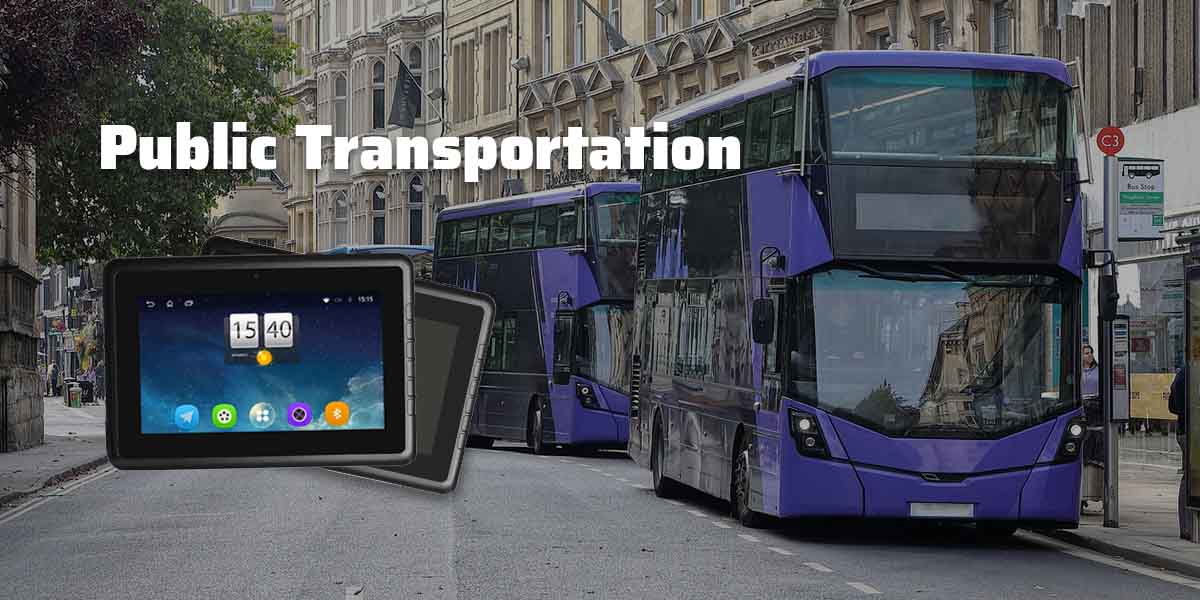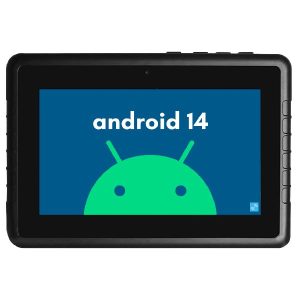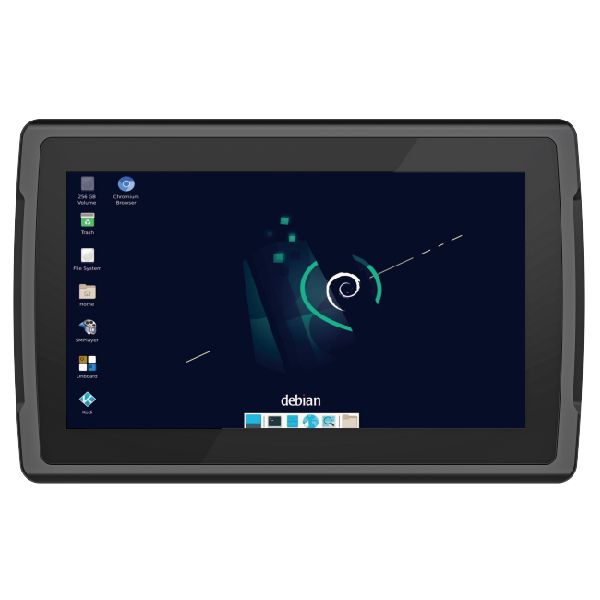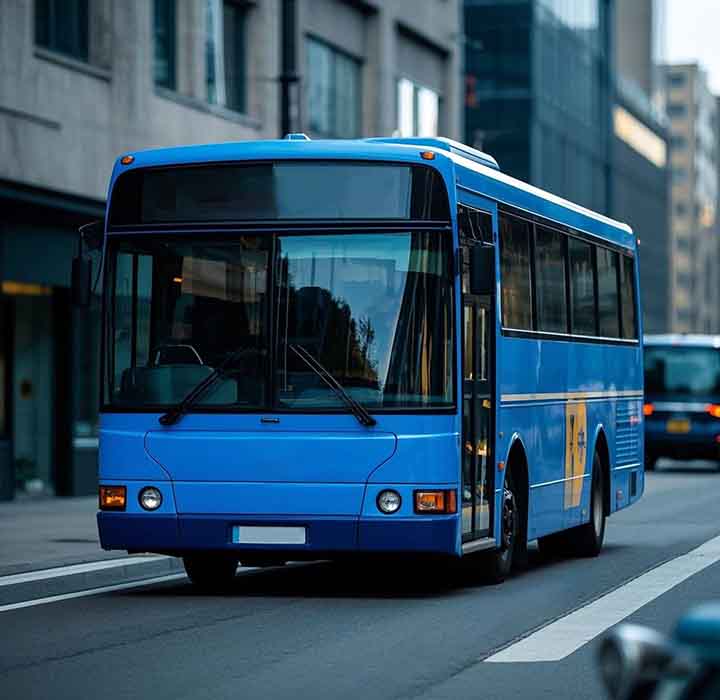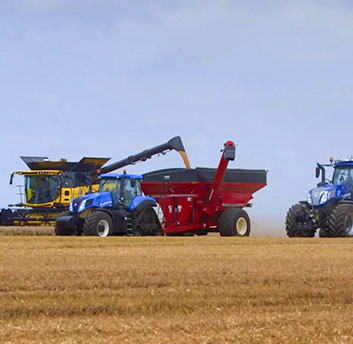Rugged Tablet For Public Transportation
The Operational Stress Behind Urban Bus Fleets
Urban bus fleets operate in dynamic, high-density environments where traffic congestion, unpredictable road conditions, and tight scheduling windows create constant pressure on drivers and control centers. From peak-hour bottlenecks to sudden route disruptions and passenger surges, these factors put both service reliability and operational safety at risk.
Common Challenges in Urban Bus Systems
Urban public transportation systems are increasingly complex, requiring seamless coordination between drivers, control centers, passengers, and onboard subsystems. Yet in practice, operators often face the following persistent challenges:
● Disjointed Onboard Systems
Fare collection units, surveillance DVRs, driver consoles, and door controllers are often supplied by different vendors, lacking standardized interfaces. This leads to increased wiring complexity, compatibility issues, and higher integration costs.
● Limited Real-Time Communication
Without stable LTE connectivity and precise GNSS positioning, it becomes difficult to support real-time dispatch, route adjustments, or passenger information displays—especially when vehicles move between coverage zones.
● Incomplete Visibility & Safety Risks
Many city buses lack sufficient camera coverage or rely on low-resolution analog systems. In fog, low light, or crowded stops, drivers often suffer from blind spots, making docking or maneuvering dangerous without visual assistance.
● Manual Maintenance & No Remote Access
When mobile terminals fail or software updates are needed, technicians must access vehicles manually. Lack of MDM (Mobile Device Management) support increases service downtime and limits the ability to monitor device health at scale.
● No Unified Event Logging or Surveillance
Important operational events (e.g., emergency brake, door open, fare conflict, passenger fall) are rarely correlated with video evidence. Without integrated GPIO triggers and video time-stamping, post-incident investigations become inefficient.
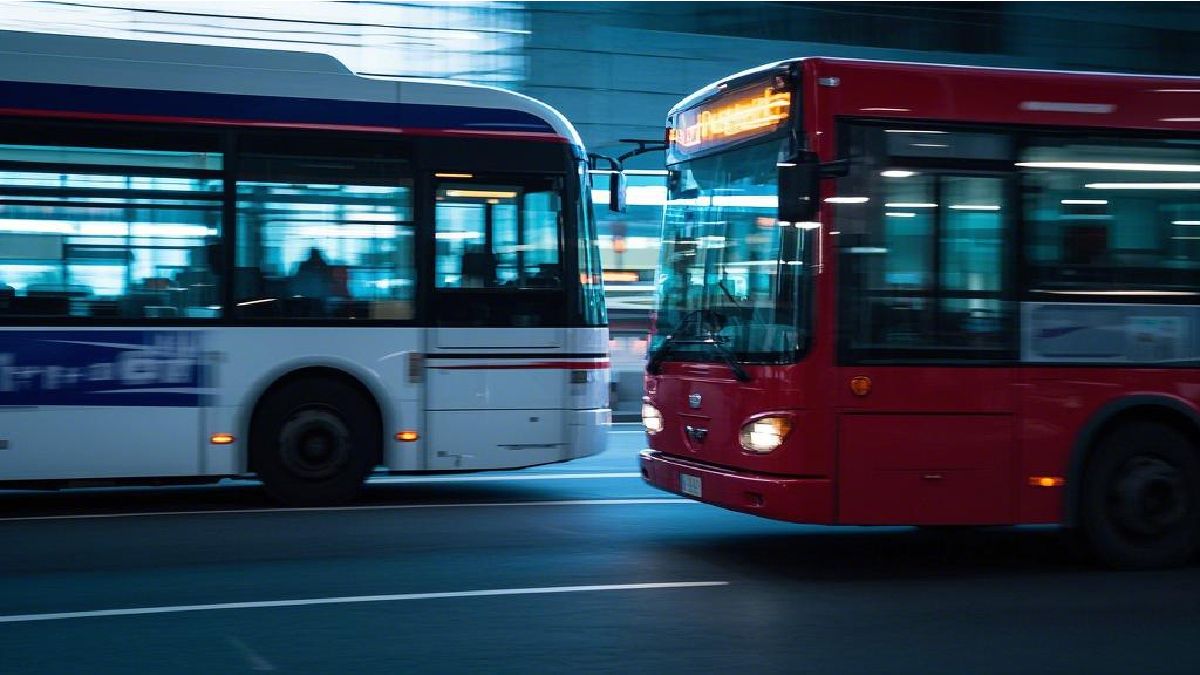
Rugged Terminals for Smart Public Transportation
In public transportation, efficiency and reliability are essential to ensure smooth, timely service. Waysion’s rugged MDT V7S is designed to enhance operations across a wide range of vehicles, including city buses, school buses, and tourist buses. Alongside the Q777 and SYVR10R, WAYSION provides an integrated hardware solution that meets the real-time data, control, and safety demands of modern transit systems.
Terminal Portfolio for Transit Integration
V7S – Compact MDT for Driver Interaction and I/O Control
7” sunlight-readable capacitive touchscreen, Android 14
Native support for CAN bus, RS232, RS485, GPIO
IP65 protection, –20°C to +70°C wide temperature range
Mounted at driver station or near dash panel
Ideal for: route display, driver login, vehicle I/O monitoring, and door trigger logic
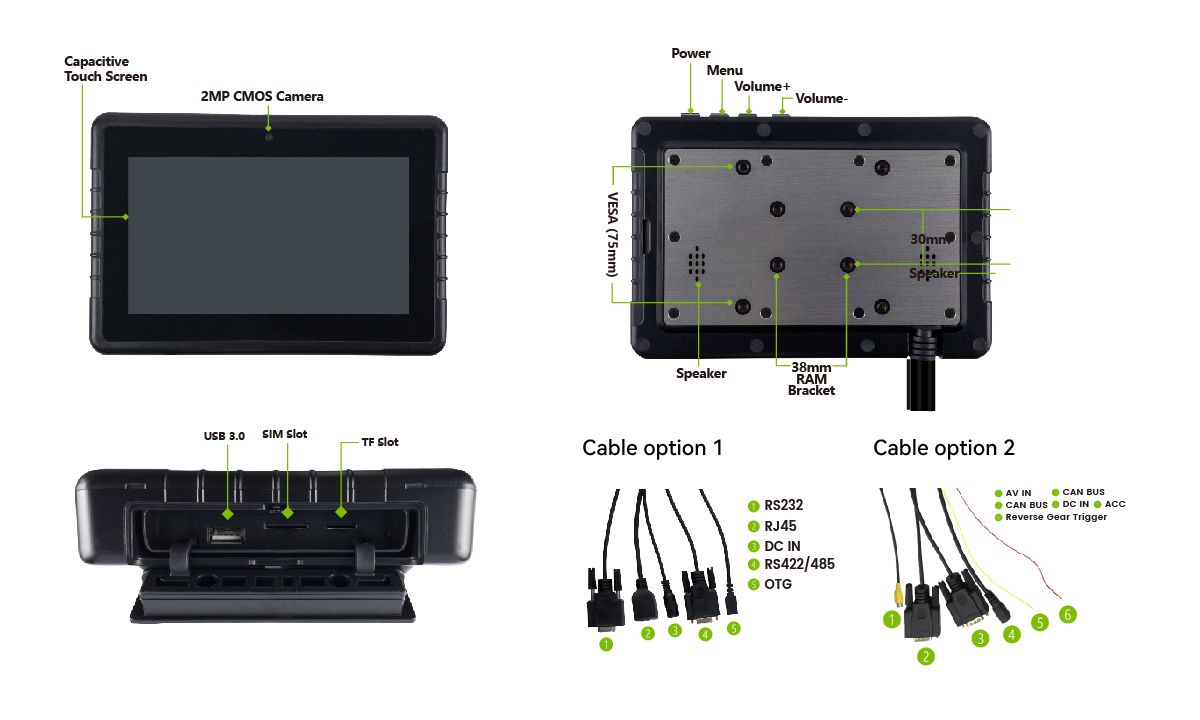
Q777 – Application Terminal with Camera Input and Optional Expansion
Android 14 rugged tablet with 1× AHD camera input for rear-view or cabin camera
Interfaces: RS232/RS485 (no native GPIO or CAN; available via external adapter)
NFC module for driver ID or passenger access
Dual SIM 4G LTE, GNSS (GPS/GLONASS/BEIDOU)
Suited for: video display, driver interface, navigation, dispatch, ticketing integration
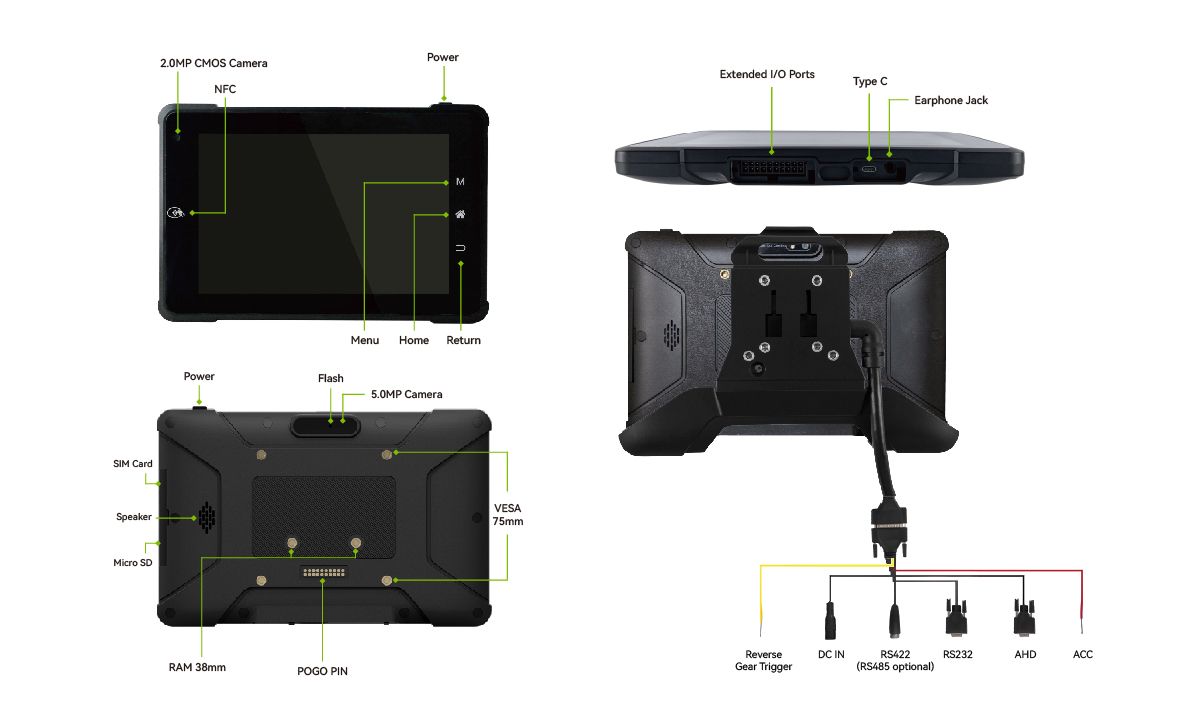
SYVR10R – Embedded Video Gateway for Surveillance Recording
Linux/Android 12 operating systems
Supports up to 8× AHD cameras with full recording and snapshot
GPIO-triggered recording for door open, reverse, or emergency button
1× Ethernet, RS232, CAN, GPIO, and optional 4G LTE for video transmission
Mountable under-seat or dashboard housing
Used for: capturing external surveillance, rear/front views, and in-cabin events
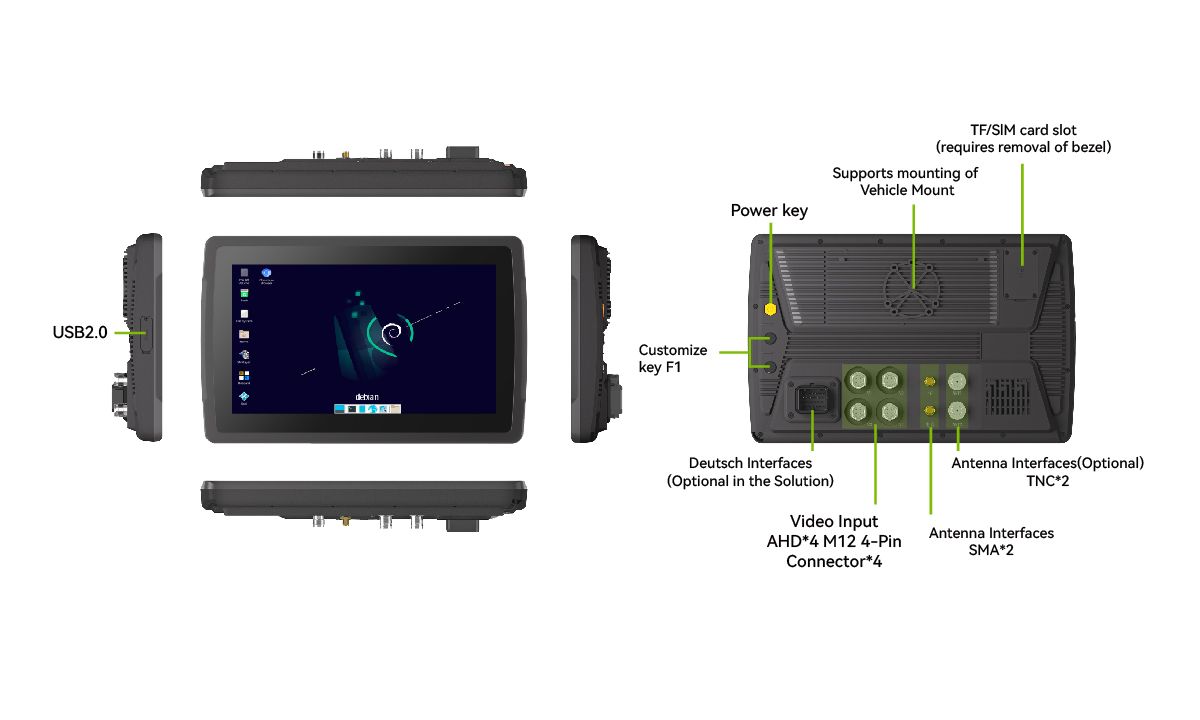
Built for System Integration
WAYSION’s rugged terminals—V7S, Q777, and SYVR10R—are engineered for seamless integration with fare systems, vehicle sensors, and fleet platforms. With rich I/O, OS flexibility, and remote manageability, they offer system integrators a reliable, scalable foundation for smart public transport deployments.
